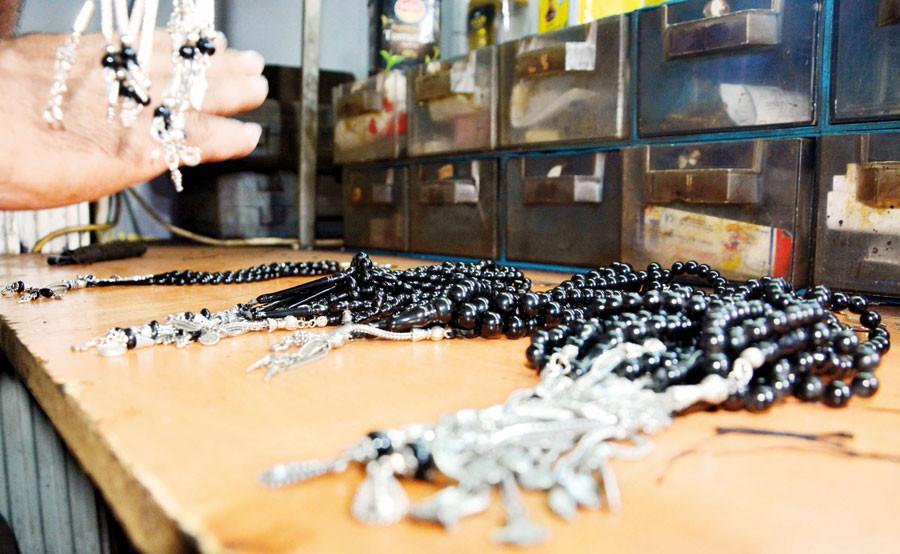Shaping Erzurum’s ‘black gold’ for 43 years
ERZURUM

Metin Çelebi has been shaping and engraving jet stones, which is called “black gold” in the eastern province of Erzurum, for 43 years. He engraves traditional Turkish motifs on them, making rosaries and accessories before selling them to buyers.
Çelebi started working in the atelier of a rosary craftsman, Ahmet Coşkun, at the age of eight. Throughout the years Çelebi learned everything about the art from Çoşkun and other artisans.
The jet stones are removed by villagers from mines in the mountains of Erzurum with much difficulty. Locals in the region call the jet stone “black gold.”
One of the Culture and Tourism Ministry’s traditional handicraft artists, Çelebi is working to promote this handicraft to the world.
Çelebi comes to his atelier in the Yakutiye district early every morning to work on the jet stones, with folk songs playing in the background.
Engraving Ottoman and Turkish motifs on his products, Çelebi has made great contributions to the promotion of Turkey and Erzurum by attending national and international organizations in 25 countries.
Speaking to state-run Anadolu Agency, Çelebi said when he started working as a child, many artists were making a living from the art and providing for their families. But, he said, the job today was done by very few artists.
He said the jet stone mineral was removed from 300 meters underground with much difficulty, adding, “What we do is present a natural material to people after it passes through many stages. The jet stone has 15 stages until it is made a rosary. We keep this stone in a humid area until it is put on display. Then we classify the stones according to the products that we will make. Finally, we start engraving it.”
Çelebi said the jet stone engraving was a business that required rigor.
“When you see a stone in the street you think it is useless, but it becomes worthy when you engrave it and turn it into an accessory. When you put your labor, effort, heart and soul into the stone, it becomes very beautiful. To see my product in somebody’s hand makes very happy. When someone likes your product, you become very happy, too.”
Çelebi said he engraved Ottoman, Anatolian and Seljuk motifs in his works, adding, “I have attended many fairs in Turkey and abroad to promote the jet stone to many people. I went to 25 countries, ranging from Singapore to Germany. It makes me very happy to sell and promote my products. It is magnificent that something produced in the Tutmaç village in Erzurum’s Oltu district is promoted in another part of the world. People can see how I engrave a jet stone in the fairs.”
















